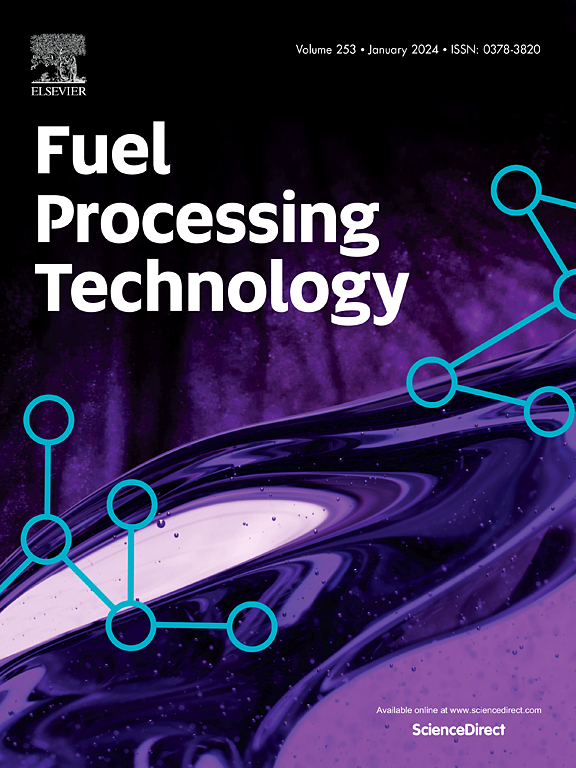Coupling dry reforming of methane with in-situ catalytic cracking of coal pyrolysis tar over xNi@HZSM-5
IF 7.2
2区 工程技术
Q1 CHEMISTRY, APPLIED
引用次数: 0
Abstract
An in-situ upgrading process of gaseous tar based on catalytic cracking of coal pyrolysis tar combining with dry reforming of methane (DRM) over xNi@HZSM-5 was proposed. The results show that light tar content over 2Ni@HZSM-5 is 80 wt% at 600 °C, and light tar yield raises from 6.0 wt% to 8.1 wt%. Compared with the Ni-based catalyst prepared by impregnation, 2Ni@HZSM-5 can separate active sites of DRM and tar cracking via the confinement effect of zeolite, so that CH4 conversion activity and tar cracking activity are individually regulated, and excessive cracking of tar by Ni can be avoided. Highly dispersed Ni particles in HZSM-5 pores promote the conversion of CH4, and the stabilization effect of hydrogen-rich free radicals on tar cracking fragments is strengthened. After the catalytic upgrading process over 2Ni@HZSM-5, the average molecular weight of tar drops down to 223 amu. Through isotope tracing experiments, it was confirmed that the active centers of tar cracking and CH4 activation during the upgrading process are acid sites of HZSM-5 and Ni respectively. Aromatic hydrocarbons with 3 and 4 rings are converted by 2Ni@HZSM-5, and the cracking fragments are combined with ·H and ·CHx to form monocyclic and bicyclic aromatic hydrocarbons.
xNi@HZSM-5上甲烷干重整与煤热解焦油原位催化裂化耦合
提出了一种基于煤热解焦油催化裂化与xNi@HZSM-5上甲烷干重整相结合的气态焦油原位提质工艺。结果表明,在600℃时,2Ni@HZSM-5上的轻焦油含量为80 wt%,轻焦油产率由6.0 wt%提高到8.1 wt%。与浸渍法制备的Ni基催化剂相比,2Ni@HZSM-5通过沸石的约束作用可以分离DRM和焦油裂解活性位点,从而分别调控CH4转化活性和焦油裂解活性,避免了Ni对焦油的过度裂解。HZSM-5孔隙中高度分散的Ni颗粒促进了CH4的转化,富氢自由基对焦油裂解碎片的稳定作用增强。经过2Ni@HZSM-5催化升级过程后,焦油的平均分子量降至223 amu。同位素示踪实验证实,改造过程中焦油裂解和CH4活化的活性中心分别为HZSM-5和Ni的酸位。3环和4环芳烃通过2Ni@HZSM-5转化,裂解片段与·H和·CHx结合生成单环和双环芳烃。
本文章由计算机程序翻译,如有差异,请以英文原文为准。
求助全文
约1分钟内获得全文
求助全文
来源期刊

Fuel Processing Technology
工程技术-工程:化工
CiteScore
13.20
自引率
9.30%
发文量
398
审稿时长
26 days
期刊介绍:
Fuel Processing Technology (FPT) deals with the scientific and technological aspects of converting fossil and renewable resources to clean fuels, value-added chemicals, fuel-related advanced carbon materials and by-products. In addition to the traditional non-nuclear fossil fuels, biomass and wastes, papers on the integration of renewables such as solar and wind energy and energy storage into the fuel processing processes, as well as papers on the production and conversion of non-carbon-containing fuels such as hydrogen and ammonia, are also welcome. While chemical conversion is emphasized, papers on advanced physical conversion processes are also considered for publication in FPT. Papers on the fundamental aspects of fuel structure and properties will also be considered.
 求助内容:
求助内容: 应助结果提醒方式:
应助结果提醒方式:


